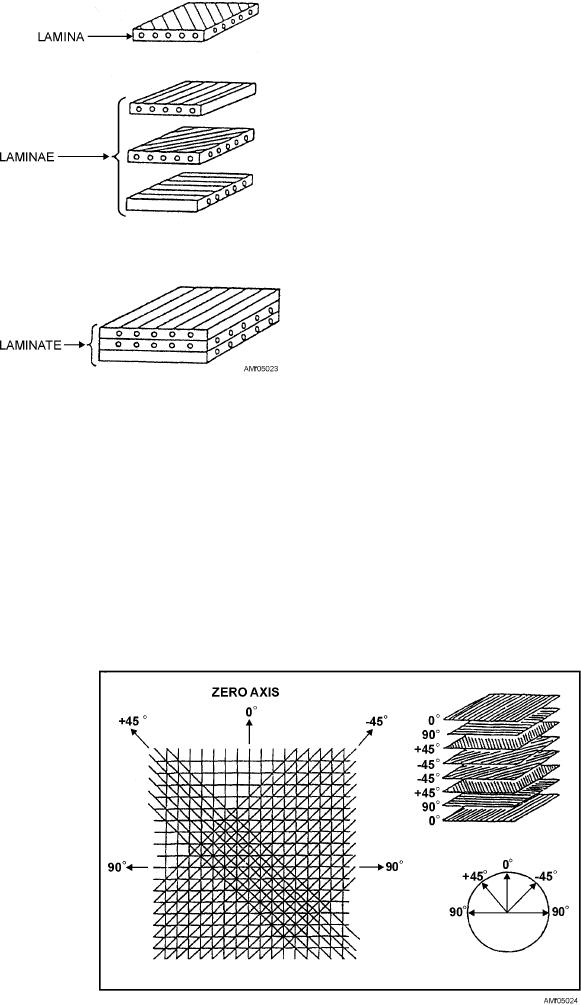
CATEGORIES OF COMPOSITE MATERIAL
DAMAGE
Advanced composite materials continue to be
increasingly popular with designers of new aircraft. It is
estimated that new airframes will be 75 percent to 80
percent composites. As a structural mechanic, you will
be required to maintain these new types of aircraft. To
be proficient, you must be able to recognize the types of
damage, understand the processes involved in damage
assessment, inspection, and repair of composite
materials. As new materials are introduced, new repair
procedures will be required. It will be your
responsibility to keep abreast of these developments.
Composite materials damage may be categorized
as either environmental or physical. Environmental
damage includes crazing and cracking caused by solar
and ultraviolet radiation, water absorbed through
humidity and rain, and lightning strike damage.
Figure 5-23.--Laminae stacking.
Lightning strikes can cause holes to be burned in the
structure, puncturing and splintering, and it has been
denoted in brackets, with the angle of each ply
known to weld bearings and hinges. Physical damage is
separated by a slash (/); for example,
caused by an applied force or deficiency in fabrication,
[+45/-45/+45/-45].
such as dents, scratches, cracks, cuts and abrasions,
Laminae are listed in sequence from the first
pits, voids, disbonds, delaminations, core crush on
lamina to the last. The brackets or parenthesis indicate
sandwich structures, and impact damage.
the beginning and the end of a code. The plus (+) and
ASSESSMENT OF COMPOSITE MATERIAL
minus (-) angles are relative to the "X" axis. Plus (+)
DAMAGE
signs are to the left of 0, and minus (-) signs are to the
right of 0. Adjacent laminae of equal angles but
The task of repair begins when you determined that
opposite signs are identified as , (45 = +45, -45). The
the structure has been damaged and that the damage is
directional strengths and stiffness of the laminate can
sufficient to require the structure to be repaired. The
be altered by changing the ply orientation.
Figure 5-24.--Standard ply orientation clock.
5-19

